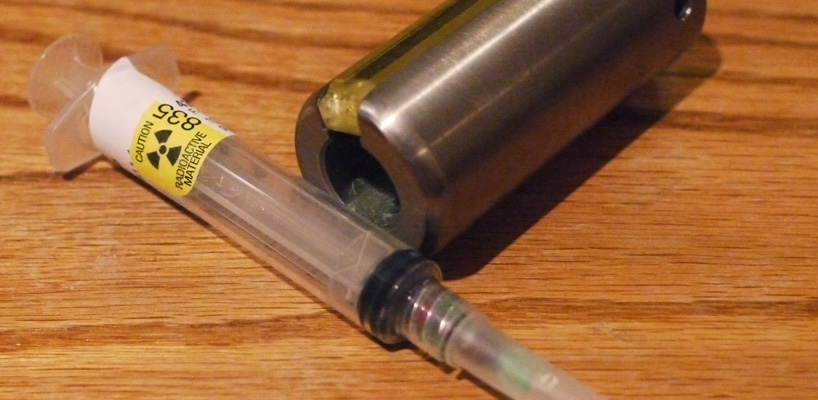Renowned for its role in producing the first atomic bomb, Oak Ridge, Tennessee made its mark in history during World War II. But this is just one breakthrough among hundreds of scientific innovations that originated in the Secret City.
Since Oak Ridge National Laboratory (ORNL) was established in 1943, brilliant researchers and scientists from all over the world have gathered in Oak Ridge, churning out hundreds of astounding innovations that have transformed billions of lives.
Thanks to ORNL, touchscreens have revolutionized the way we communicate; millions of people have conquered diseases once believed insurmountable; and consumers all over the world can make purchases with just a swipe of a card.
Here are a few examples of how Oak Ridge has transformed the world.
1) Plutonium and Radioactive Isotopes

During the Manhattan Project, Oak Ridge became home to the first nuclear reactor designed and built for continuous operation. The Graphite Reactor at the X-10 Plant produced the first significant amounts of plutonium, which were used in research that led to the atomic bomb.
After the war, the reactor was used for research and production of radioactive isotopes for medicine, research and industry. In 1946, ORNL presented a small container of the radioisotope carbon-14 to a St. Louis hospital that specialized in detecting and treating cancer. Today, tens of millions of nuclear medicine procedures are performed each year.
2) Touchscreens

Perhaps one of the biggest innovations in personal technology was invented in the foothills of Appalachia. Yes, the first touchscreen was not forged in Silicon Valley; rather, it developed from the mind of ORNL physicist Dr. G. Samuel Hurst.
After completing his workday at ORNL, Hurst and his nine friends plugged away in his basement, developing a touchscreen on a computer. Their after-hours experiment eventually grew into the company Elo TouchSystems, which laid the groundwork for touchscreens now used in smartphones, tablets, computers, and kiosks.
3) Channeling from chips to hips

In 1962, ORNL physicists used a computer model to simulate ions bombarding crystalline metals. One simulated particle entered a tunnel in the model’s atomic structure, revealing an effect known as ion channeling. This computational prediction, which was quickly verified experimentally, enabled researchers to advance the use of ion implantation for the semiconductor industry and for improved artificial joints, such as longer lasting hip replacements.
4) Home of America’s most powerful supercomputer
Titan, the fastest supercomputer in the U.S., calls ORNL home. The only computer faster than Titan is in China. Covering 4,352 square-feet of floor space, Titan can reach speeds of more than 20 petaflops – about 20,000 trillion calculations per second. That’s faster than half a million laptops.
Titan is an “open science” supercomputer, meaning it’s available for any scientific research. ORNL awards access on Titan based on the importance of the project.
An example of one of Titan’s endeavors is the BigNeuron Project. Using this supercomputer, researchers are working to digitally reconstruct and analyze individual neurons, with the goal of mapping the nearly 100 billion neurons in the human brain. Researchers hope this knowledge will allow them to better understand how diseases like Alzheimer’s or Parkinson’s develop in the brain.
5) Pressurized Water Reactors

Alvin Weinberg, former director of ORNL, was the first scientist to publish and promote the use of pressurized water reactors (PWRs). Today, PWRs are an integral part of most nuclear power plants, which generate 20 percent of America’s electricity.
Aboard nearly every Navy submarine and aircraft carrier is this type of reactor. PWRs enable vessels to go for long periods of time without refueling.
ORNL even designed and tested a reactor for an Air Force nuclear-powered aircraft in the 1950s. No “nuclear airplane” ever flew, but the project produced advances in compact reactor design, radiation shielding and basic materials research.
6) Lab on a Chip

ORNL researchers developed a postage-stamp-sized device with microscopic channels in which tiny amounts of a liquid can be separated and analyzed. The “lab on a chip” led to new, computer-controlled chemical and biochemical tools and procedures that have helped the pharmaceutical industry separate and discover proteins for the development of effective new drugs.
7) Safer vaccines

ORNL researcher Norman Anderson used centrifuge technology to purify vaccines. Today, pharmaceutical companies use this type of technology to remove impurities from vaccines, reducing or eliminating unwanted side effects.
